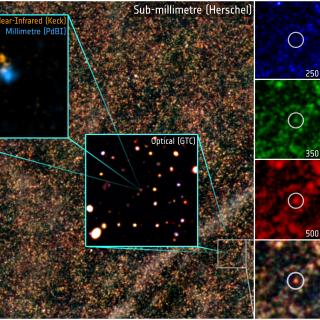Oszkiewicz, Dagmara; Troianskyi, Volodymyr; Galád, Adrián; Hanuš, Josef; Ďurech, Josef; Wilawer, Emil; Marciniak, Anna; Kwiatkowski, Tomasz; Koleńczuk, Paweł; Skiff, Brian A.; Polakis, Tom; Moskovitz, Nicholas A.; Geier, Stefan; Föhring, Dóra; Hung, Denise; Gajdoš, Štefan; Világi, Jozef; Polčic, L. 'udovít; Kashuba, Volodymyr; Udovichenko, Sergei; Keir, Leonid; Benishek, Vladimir; Pray, Donald P.; Shevchenko, Vasilij; Krugly, Yurij; Kankiewicz, Paweł; Hasegawa, Sunao; Behrend, Raoul; Bernasconi, Laurent; Leroy, Arnaud; Roy, René; Ivanova, Oleksandra; Husárik, Marek; Simon, Andrii
Fecha de publicación:
6
2023
Número de autores del IAC
1
Número de citas referidas
5
Descripción
Basaltic V-type asteroids are common in the inner part of the Main Asteroid Belt and much less abundant in the mid and outer parts. They are of scientific interest because they sample crusts and mantles of theoretically plentiful differentiated planetesimals that existed in the Solar System four billion years ago. Some Solar System theories suggest that those objects formed in the terrestrial planet region and were then implanted in the main asteroid belt. In consequence, we should observe a large number of fragments of multiple differentiated planetesimals in the inner Main Belt. That region of the Asteroid Belt is filled with V-type fragments; however, they are difficult to tell apart from typical Vestoids and Vesta fugitives. In this work, we focus on physical and dynamical characterization of V-types in the inner Main-Belt and aim to reconcile those properties with the planetesimal formation and evolution theories.
We conducted an observing campaign over the years 2013-2022 and obtained photometric observations of V-type asteroids located mostly outside the Vesta family at specific locations of the inner Main Belt (the so-called Cells I and II). The total number of partial dense photometric lightcurves obtained in this study was ∼ 2910. We were able to model ∼100 V-types. We further supplement those data with 133 spins of V-types from the DAMIT database and 237 objects derived from Gaia DR3 (Ďurech & Hanuš 2023). We found 78% ±11% and 38% ±13% retrograde rotators in Cell I and II, respectively. This statistic is remarkably consistent with the numerical simulations of the escape paths of Vesta fugitives that predict 81% retrograde rotators in Cell I and 40% in Cell II after the dynamical integration of 2 Gys. Based on our statistics we conclude that if there are non-Vestoids in the inner main belt, they are likely to be very few. This is consistent with the small fraction of anomalous HED meteorites in meteorite collections, small number of non-Vestoids in the middle and outer Main Belt and points to planetesimal formation location close to the Sun.
Proyectos relacionados
Formación y Evolución de Galaxias: Observaciones Infrarrojas y en otras Longitudes de Onda
Este grupo desarrolla varios proyectos extragalácticos en diferentes rangos del espectro electromagnético utilizando satélites y telescopios en tierra para estudiar la evolución cosmológica de las galaxias y el origen de la actividad nuclear en galaxias activas. En el aspecto instrumental, el grupo forma parte del consorcio internacional que ha
